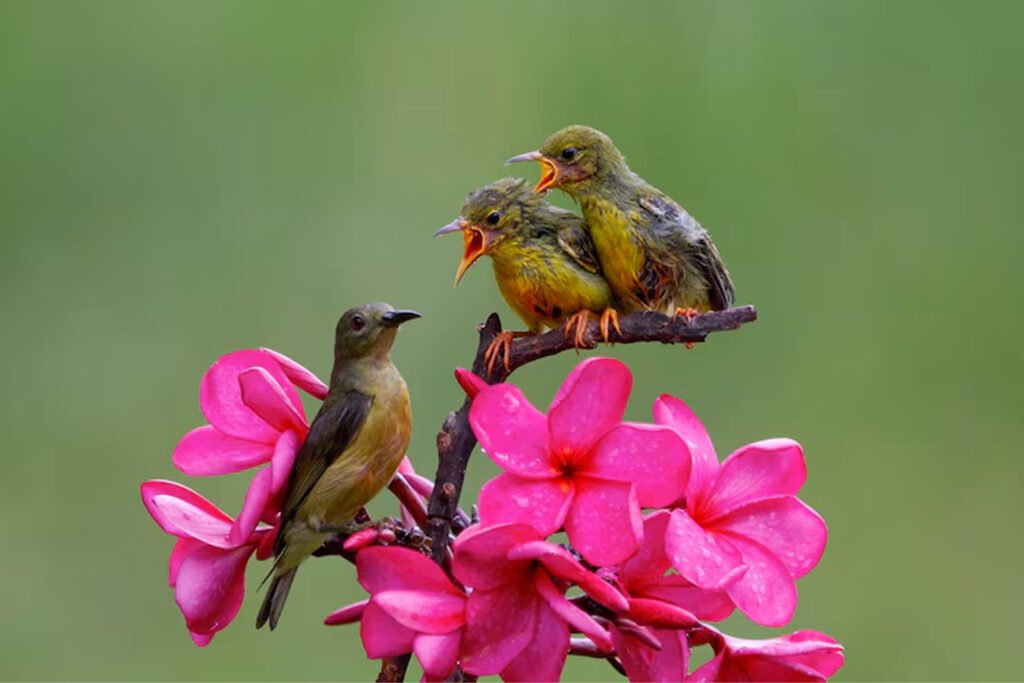Have you ever wondered why birds sing so fervently during mating season? The significance of birdsong in mating rituals goes far beyond mere melody—it’s a vital, multifaceted tool that determines mating success and territorial dominance. For many male birds, these intricate songs are more than just mating signals; they’re audible advertisements of health, vigor, and genetic prowess. By unraveling the complex role birds play in nature’s symphony, we gain insight into how these melodious rituals shape breeding success. Understanding birdsong isn’t just for the enthusiasts; it’s essential for anyone keen on uncovering the secrets of avian life and ensuring their continuity.
Species-Specific Songs: Variety and Complexity
Bird species often develop unique songs that play a crucial role in mate attraction. These species-specific songs are not merely auditory embellishments but serve as vital communication tools in the avian world. Each species’ song is tailored to convey information about the singer’s health and genetic fitness, making it an essential factor in mate selection. Females are often drawn to males with distinctive songs that demonstrate vigor and strength, both key indicators of a male’s capability to establish and protect a territory. This acoustic communication effectively signals the quality of a potential mate, ensuring that females can make informed choices in the competitive breeding landscape.
| Species | Song Characteristics |
|———————-|—————————————————–|
| Nightingale | Complex and varied, with over 200 distinct phrases |
| Song Sparrow | Melodic, repetitive, with regional dialects |
| Mockingbird | Mimicry of up to 200 different sounds |
| Lyrebird | Incredibly diverse, incorporating environmental sounds|
Role of Song Complexity
The complexity of a bird’s song can significantly impact mate selection and territorial disputes. Complex songs often require considerable neuromotor skill, which serves as an honest indicator of a male’s genetic quality and overall health. Females typically favor males with intricate vocalizations, interpreting these as signals of superior fitness and the ability to provide for offspring. In territorial disputes, a more complex song can establish dominance over rivals, deterring them from encroaching and asserting the singer’s claim over a territory. This demonstrates the evolutionary advantage of song complexity, as it enhances reproductive success by attracting mates and securing resources.
Environmental Influences on Birdsong
How do different habitats influence bird song adaptation? Birds adapt their vocalizations to suit their environments, ensuring effective communication across varying terrains. In dense forests, birds often develop songs with lower frequencies to penetrate thick vegetation and reach distant mates or rivals. Open habitats, such as grasslands, prompt birds to use high-pitched, loud calls that travel over vast distances without obstruction. Coastal birds may incorporate rhythmic patterns to synchronize with the ebb and flow of ocean sounds. These adaptations highlight the birds’ ability to modify song characteristics to maintain effective communication, supporting mating rituals and territory defense in diverse environments.
| Environmental Factor | Impact on Birdsong |
|————————–|———————————————————|
| Dense Forests | Lower frequencies to penetrate vegetation |
| Open Grasslands | High-pitched, loud calls for long-distance communication|
| Urban Areas | Increased volume and pitch to overcome noise pollution |
What is the impact of noise pollution on birdsong, and how do birds adapt in urban areas? Noise pollution poses a significant challenge by masking essential vocalizations. Birds in urban settings often increase their song volume and pitch to overcome this auditory interference. Some species may alter their singing schedules, opting for quieter times of day, such as early morning, to avoid competing with human-made noise. These adaptations are crucial for maintaining effective communication, ensuring that males can still attract mates and defend territories despite the challenges posed by urban environments. This demonstrates the resilience of birds in navigating the complexities of modern habitats.
Final Words
Birdsong plays a crucial role in mating rituals, serving as both an attraction mechanism and a territorial defense. Males use their songs to signal health and vitality, which attracts females and helps secure nests. Across species, complex songs can significantly influence mate selection, reflecting the singer’s capability to thrive and provide.
Moreover, birdsong has deep evolutionary roots, offering adaptive advantages that aid in species survival. Environmental factors can also shape these songs, influencing how birds communicate in varying habitats. By learning from adult mentors, young birds continue this legacy, ensuring the cultural transmission of vocalizations.
Overall, the significance of birdsong in mating rituals underscores a blend of nature and nurture, where melody becomes an essential component of survival and reproduction in the avian world.
FAQ
How does bird plumage increase the odds of reproduction?
Bird plumage enhances mating likelihood by attracting potential mates with vibrant colors and patterns, signifying health and genetic quality. These visual displays often complement courtship behaviors, making the birds more appealing to mates.
What is courtship behavior in birds with examples?
Courtship behavior in birds includes dances, songs, and nest building. For instance, peacocks fan tail feathers, while marsh warblers showcase complex songs. These behaviors attract mates by demonstrating fitness.
Why do birds engage in mating rituals?
Birds perform mating rituals to attract partners and establish pair bonds. Rituals, including songs, dances, and displays, communicate the individual’s suitability as a mate based on health and vitality.
What is the significance of song in bird courtship?
Birdsong is pivotal in courtship as it attracts mates, signals health, and establishes territories. For example, male nightingales with more complex songs are likely to attract females, leading to increased mating success.
Why do birds perform dances to mate?
Birds dance to enhance their mating appeal by showcasing physical fitness and coordination. These displays, combined with vocalizations, help demonstrate the male’s capability to females, influencing mate selection.
What is the symbolism of birdsong?
Birdsong symbolizes communication, signaling territory ownership, and mate attraction. It reflects the singer’s fitness and capability, impacting reproductive success and establishing social dynamics within bird communities.


